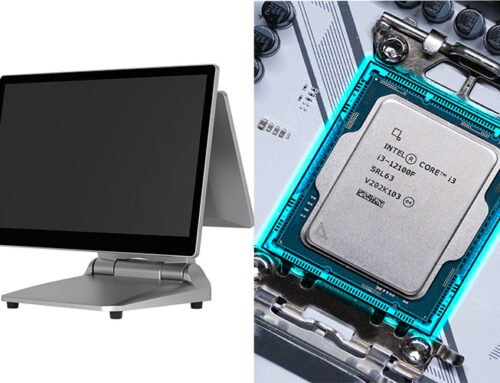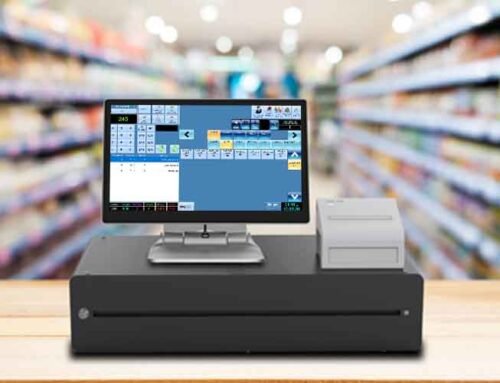What is a POS machine?
POS machine, or Point of Sale machine, is a device used to process transactions in retail and service environments. It typically includes hardware like a touchscreen, card reader, and printer, along with software to manage sales, inventory, and customer data, streamlining the checkout process.
What is the function of a POS machine?
POS machine plays a crucial role in retail and service industries by:
- Transaction Processing: It handles sales transactions, allowing businesses to accept various payment methods like cash, credit, and debit cards.
- Inventory Management: POS systems track inventory levels in real time, helping businesses manage stock and reduce losses.
- Sales Reporting: They generate detailed sales reports, providing insights into sales trends, peak hours, and popular products.
- Customer Management: POS machines can store customer information, enabling personalized marketing and loyalty programs.
- Employee Management: They can track employee sales performance and hours worked, streamlining payroll processes.
- Integration: Many POS systems integrate with accounting software, e-commerce platforms, and other business tools for seamless operations.
- User-Friendly Interface: With intuitive touchscreen interfaces, they simplify the checkout process for staff and customers alike.
By combining these features, a POS machine enhances operational efficiency and improves the overall customer experience. Would you like to delve deeper into any specific aspect?
How POS machine works
POS machine plays a crucial role in retail and service industries by:
- Transaction Processing: It handles sales transactions, allowing businesses to accept various payment methods like cash, credit, and debit cards.
- Inventory Management: POS systems track inventory levels in real time, helping businesses manage stock and reduce losses.
- Sales Reporting: They generate detailed sales reports, providing insights into sales trends, peak hours, and popular products.
- Customer Management: POS machines can store customer information, enabling personalized marketing and loyalty programs.
- Employee Management: They can track employee sales performance and hours worked, streamlining payroll processes.
- Integration: Many POS systems integrate with accounting software, e-commerce platforms, and other business tools for seamless operations.
- User-Friendly Interface: With intuitive touchscreen interfaces, they simplify the checkout process for staff and customers alike.
By combining these features, a POS machine enhances operational efficiency and improves the overall customer experience. Would you like to delve deeper into any specific aspect?
What is the function of a POS machine?
- A POS (Point of Sale) machine operates by processing transactions between a customer and a business. Here’s a brief overview of its working principle:
- Data Input: The cashier inputs the sale details via a touchscreen or physical buttons. This can include scanning items with a barcode scanner or entering them manually.
- Transaction Processing: The POS system calculates the total cost, including taxes and discounts. It prepares the transaction for payment.
- Payment Authorization: For card transactions, the system communicates with payment processors to authorize the payment. This involves securely transmitting card information and verifying funds.
- Payment Completion: Once authorized, the system completes the transaction. A receipt is generated, which can be printed or sent electronically.
- Data Storage: Transaction details are stored in the system for inventory management, sales reports, and financial tracking.
- Integration: Many POS systems integrate with other software (like accounting or inventory management), enabling seamless data flow and reporting.
- This streamlined process enhances efficiency and accuracy in retail and service environments.
How much does a POS machine cost?
The cost of a POS machine can vary widely based on several factors, including the type of system, features, and whether it’s a complete setup or just software. Here’s a detailed breakdown:
- Hardware Costs
Basic POS Terminal: $300 – $1,500
Includes a touchscreen, card reader, and cash drawer.
Advanced POS Systems: $1,500 – $5,000+
Includes additional features like barcode scanners, receipt printers, and customer display screens.
Mobile POS (mPOS): $100 – $800
Tablets or smartphones with card readers for on-the-go transactions.
- Software Costs
Monthly Subscription: $30 – $300/month
Cloud-based solutions often charge a monthly fee. Costs depend on features like inventory management, analytics, and customer support.
One-Time Purchase: $500 – $3,000
Some systems offer a one-time purchase option for software, particularly for traditional setups.
- Payment Processing Fees
Typically 1.5% – 3.5% per transaction
Some providers may charge a flat fee per transaction (e.g., $0.10 – $0.30).
- Installation and Setup Costs
Installation Fees: $100 – $500
Depending on complexity, some suppliers charge for setup and training.
- Additional Costs
Maintenance and Support: $100 – $500/year
Upgrades and Add-ons: Costs vary based on features (e.g., loyalty programs, advanced reporting).
- Total Cost Estimate
Small Business Budget: $1,000 – $5,000 for a basic setup (hardware + software + installation).
Mid-sized Business Budget: $5,000 – $15,000 for a more comprehensive system with advanced features.
Larger Retailers or Restaurants: $15,000+ for complex systems with multiple terminals and integrations.
Conclusion
When budgeting for a POS system, consider both initial costs and ongoing expenses. It’s important to assess your business needs and choose a system that provides the best return on investment. Always request quotes from multiple suppliers to compare total costs effectively.
How much does a POS machine cost?
The cost of a POS machine can vary widely based on several factors, including the type of system, features, and whether it’s a complete setup or just software. Here’s a detailed breakdown:
- Hardware Costs
Basic POS Terminal: $300 – $1,500
Includes a touchscreen, card reader, and cash drawer.
Advanced POS Systems: $1,500 – $5,000+
Includes additional features like barcode scanners, receipt printers, and customer display screens.
Mobile POS (mPOS): $100 – $800
Tablets or smartphones with card readers for on-the-go transactions.
- Software Costs
Monthly Subscription: $30 – $300/month
Cloud-based solutions often charge a monthly fee. Costs depend on features like inventory management, analytics, and customer support.
One-Time Purchase: $500 – $3,000
Some systems offer a one-time purchase option for software, particularly for traditional setups.
- Payment Processing Fees
Typically 1.5% – 3.5% per transaction
Some providers may charge a flat fee per transaction (e.g., $0.10 – $0.30).
- Installation and Setup Costs
Installation Fees: $100 – $500
Depending on complexity, some suppliers charge for setup and training.
- Additional Costs
Maintenance and Support: $100 – $500/year
Upgrades and Add-ons: Costs vary based on features (e.g., loyalty programs, advanced reporting).
- Total Cost Estimate
Small Business Budget: $1,000 – $5,000 for a basic setup (hardware + software + installation).
Mid-sized Business Budget: $5,000 – $15,000 for a more comprehensive system with advanced features.
Larger Retailers or Restaurants: $15,000+ for complex systems with multiple terminals and integrations.
Conclusion
When budgeting for a POS system, consider both initial costs and ongoing expenses. It’s important to assess your business needs and choose a system that provides the best return on investment. Always request quotes from multiple suppliers to compare total costs effectively.
How to find a suitable POS machine supplier?
Researching POS machine suppliers involves several steps to ensure you find a reliable and suitable provider for your business needs:
Identify Your Needs: Determine what features you require (e.g., inventory management, payment processing, customer tracking).
Online Search: Use search engines to find POS suppliers. Look for reviews and ratings on websites like Capterra or G2.
Compare Features: Create a list of potential suppliers and compare their offerings, focusing on functionality, pricing, and customer support.
Read Reviews and Testimonials: Check customer reviews on independent sites and social media to gauge user satisfaction.
Request Demos: Reach out to suppliers to request product demos. This helps you assess usability and compatibility with your business.
Check for Integration Options: Ensure the POS system can integrate with your existing software (e.g., accounting, e-commerce).
Evaluate Customer Support: Research the level of support provided (e.g., 24/7 availability, online resources) and read feedback on their service.
Consider Hardware and Software: Decide if you need a full hardware setup or a cloud-based system. Ensure the supplier can provide both.
Ask for References: Request references from other businesses similar to yours to get insights into their experiences.
Review Contract Terms: Carefully read the contract for any hidden fees, terms of service, and cancellation policies.
Visit Trade Shows: Attend industry trade shows or expos to meet suppliers, see their products firsthand, and ask questions.
By following these steps, you can effectively research and select a POS machine supplier that fits your business needs.






Leave A Comment